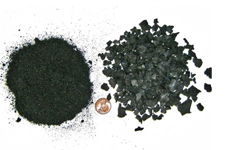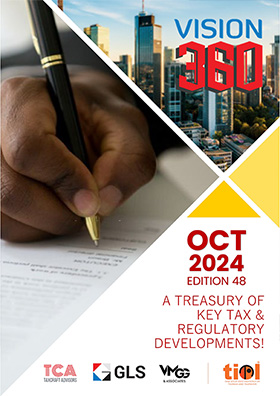Cus - Used and old tyres cut into two-three pieces to produce 'crumb rubber' - whether activity 'manufacture' u/s 2(f) of CEA, 1944 for purpose of leviability of CVD - Matter referred to LB: High Court
By TIOL News Service
NEW DELHI, AUGUST 09, 2016 : THE petitioner questions the validity of a clarification dated 2nd January 2015 issued by the Tax Research Unit to the effect that there was no exemption from payment of excise duty in respect of tyre scrap cut into two to three pieces produced from used and old tyres and that, therefore, the said goods are chargeable to additional customs duty or countervailing duty ('CVD') under Section 3(1) of the CTA, 1975.
In the first round of litigation the petitioner had filed a Writ Petition when its representation dated 11th August 2014 made to the Government of India protesting against the imposition of 12% CVD was not responded to. The High Court had on that occasion by its order dated 02.12.2014 disposed of the Writ Petition and pursuant to which the impugned clarification was issued.
In the present matter, the Petitioner submits that cutting of old tyres that have been found unfit for consumption or marketing into two-three pieces to turn them into waste/scrap (crumb rubber) does not amount to manufacture and, therefore, the question of such goods being subject to CVD when imported does not arise. [Modi Rubber Limited, Modi Nagar, U.P. v. Union of India 1987 (29) ELT 502 (Del), Gujarat Reclaim & Rubber Products Ltd - 2009-TIOL-897-CESTAT-MUM . refers]
The petitioner also adverted to the decision in Commissioner of Central Excise, Chandigarh-I v. Markfed Vanaspati & Allied Industries - 2003-TIOL-87-SC-CX to urge that merely because old and used tyres were classified under Tariff Entry No.4012 whereas 'waste paring and scrap of rubber (other than hard rubber) and powder and granules obtained therefrom' was classified under Tariff Item No.4004 with the rate of duty at 12.5% it did not mean that the process by which the waste or scrap rubber was obtained from old tyres amounted to manufacture. Inasmuch as the twin test of 'manufacture and marketability' would still apply.
The counsel for Revenue submitted that the old tyre ceased to remain as such when it was subjected to the process of cutting which resulted in two or three pieces of tyres which had a distinct identity and were marketable as such; that Tariff Entry 4004 acknowledged these as distinct commodities. Reliance is placed on the following decisions - Osnar Chemical Pvt. Ltd. - 2012-TIOL-03-SC-CX ; CIPLA Ltd. - 2008-TIOL-66-SC-CX and Delhi Cloth & General Mills Co. Ltd. - 2002-TIOL-12-SC-CX-CB .
After extracting the facts contained in the case laws cited by both sides, the High Court observed-
++ This Court is of the view that the entire aspect of recycling of used tyres to generate cut pieces of tyres, which are marketable as such, requires to be examined for determining if the process by which such cut tyres are generated amounts to manufacture. While it cannot be presumed that there was manufacture merely because cut pieces of rubber are classifiable under Tariff Heading 4004, nevertheless as pointed out by the Supreme Court in Commissioner of Central Excise, Chandigarh-I v. Markfed Vanaspati & Allied Industries (supra) it requires to be examined whether the twin test of manufacture and marketability are satisfied.
++ In particular, as pointed out in Commissioner of Central Excise, Bangalore-II v. Osnar Chemical Pvt. Ltd. (supra), it would be required to be examined if in producing cut pieces of tyres from old tyres there is transformation of a product into a new product "having a different identity, characteristics and use". The issues arising in the present case not having directly arisen before the Court in Modi Rubber Limited v. Union of India (supra), and the Tariff Heading 4004 not in vogue at the time, the observations in that decision touching on the aspect of recycling of waste tyres cannot be said to be conclusive.
Noting that the decision in Modi Rubber Limited requires to be reconsidered by a larger Bench, the following issues are referred for consideration (since answer to the above questions will in turn determine if CVD can be levied on the cut tyre pieces imported by the Petitioner):
(a) Whether the process to which old tyres are subject to produce two or more pieces of cut tyre is 'manufacture' within the meaning of Section 2(f) of the Central Excise Act, 1944? and
(b) In the above context, whether the decision of this Court in Modi Rubber Limited v. Union of India 1987 (29) ELT 502 (Del) requires to be reconsidered?
(See 2016-TIOL-1689-HC-DEL-CUS)















